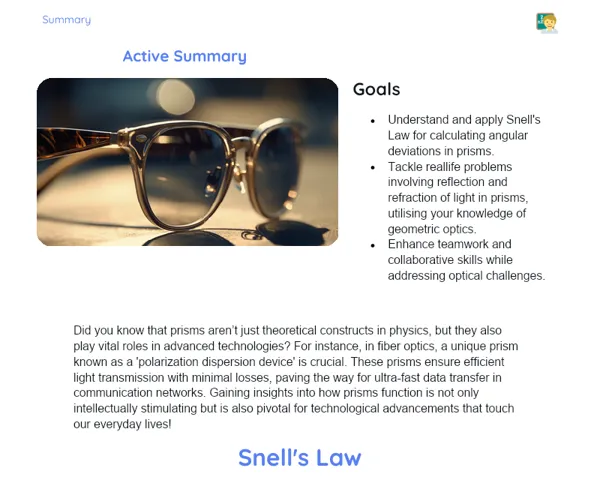Socioemotional Summary Conclusion
Goals
1. Understand the concept of elastic force and how it shows up in elastic objects, like springs and rubber bands.
2. Learn to calculate elastic force using the formula F=kx and identify what each component means.
3. Develop the ability to recognise and manage your emotions while you learn.
4. Encourage social awareness and self-knowledge by linking scientific concepts to everyday life.
Contextualization
When we talk about elastic force, we often overlook how vital it is in our daily lives. From the springs in our mattresses to the rubber bands we use for a hundred little tasks, elastic force is all around us. Grasping how this force operates helps us understand more about the physical world, while also sharpening our problem-solving abilities and guiding our decision-making. 🌍✨
Exercising Your Knowledge
Elastic Force
Elastic force is what happens when an elastic object, like a spring or a rubber band, is stretched or compressed. This force works to bring the object back to its original shape. There’s a meaningful analogy with our emotions: just as elastic force tries to restore the balance of a spring, we can learn to manage our emotions and find our equilibrium after facing stress or challenges.
-
Restorative Action: Elastic force always aims to bring the object back to its original shape, just like we should strive for emotional balance in tough times. 🤝
-
Potential Energy: Elastic objects store energy when they are deformed. Similarly, our emotional experiences can lead to learning and personal growth. 💪
-
Practical Applications: Elastic force is all around us - in springs, rubber bands, building materials - understanding it can help us solve various everyday problems. 🛠️
Hooke's Law
Hooke's Law states that the force exerted by a spring is directly proportional to how much it is deformed, summed up by the formula F = kx, where F is the elastic force, k is the elastic constant, and x is the deformation. This principle is essential not just in physics but also teaches us about proportionality in our lives: the further we drift from our equilibrium, the greater the effort needed to return to our original state.
-
Proportionality: The straight-line relationship between force and deformation shows that things become more challenging the greater the change required – a concept that applies to both physics and our everyday experiences. 📈
-
Elastic Constant (k): A spring with a high k value is stiffer. Likewise, individuals with high emotional resilience can withstand changes and challenges more successfully. 🏋️
-
Balance: Hooke's Law highlights the importance of maintaining our balance to prevent unnecessary strain and emotional fatigue. ⚖️
Elastic Constant (k)
The elastic constant (k) measures the stiffness of a spring. A spring with a high k value is stiffer and needs more force to deform it. This leads us to consider our own emotional 'elastic constant' – the more resilient we are, the better we can handle challenges without 'breaking.'
-
Measures Stiffness: The elastic constant tells us how tough it is to change an object's shape. In life, this reflects our capacity to resist pressures and changes. 🧘
-
Energy and Resilience: High k values suggest a greater ability to store energy, just as resilient people can build strength through overcoming difficulties. 🔋
-
Adaptability: Understanding the elastic constant helps us grasp how different materials (or people) respond to outside forces and equips us to deal with real-world situations better. 🌐
Key Terms
-
Elastic Force: The force that aims to restore the shape of an elastic object that has changed.
-
Hooke's Law: A physical principle stating that elastic force relates directly to the deformation experienced by the object.
-
Elastic Constant (k): A measure of how stiff a spring or elastic material is.
-
Deformation (x): The amount of stretch or compression an object experiences when exposed to a force.
For Reflection
-
How can grasping elastic force aid in building your emotional resilience? Think back on a recent challenge and reflect on how you found your way back to balance.
-
How can you apply Hooke's Law to better understand your emotional responses? Consider the proportionality between your challenges and the emotions that arise.
-
Reflect on your emotional 'elastic constant': how 'rigid' or 'flexible' do you feel when faced with pressures and changes? What strategies could boost your resilience?
Important Conclusions
-
Elastic force is a restorative force that tries to return a deformed object back to its original form.
-
Hooke's Law tells us that elastic force is proportional to the deformation experienced by an elastic object, conveyed by the formula F = kx.
-
The elastic constant (k) measures a spring’s stiffness and aids our understanding of both material resilience and personal strength.
-
Grasping elastic force not only equips us to tackle practical problems but also teaches us about emotional resilience, maintaining balance, and adaptability.
Impacts on Society
Understanding elastic force has significant implications in our daily lives, from constructing safe buildings that use springs to absorb shocks and ensure stability, to designing devices like car shock absorbers. It is a critical concept across various fields of engineering and science. Mastering how to calculate and apply elastic force can help us navigate everyday challenges – like figuring out just how much rubber band is needed to secure an item without damaging it. Moreover, the comparison between elastic force and emotional resilience is incredibly insightful. Just as a spring bounces back to its original shape after being squished or stretched, we too can learn to cope with challenges, return to our emotional balance, and grow from our experiences. This understanding is essential for each student’s personal development, preparing them to confront pressures and changes with greater awareness and effectiveness.
Dealing with Emotions
As you study elastic force and its applications, consider using the RULER method to manage your emotions. First, recognise what you feel about the content – is it frustration, curiosity, or something else? Understand what’s causing those emotions; maybe frustration comes from having trouble with the formula F=kx initially. Label your feelings accurately. Then, express these emotions positively, perhaps by discussing with classmates or jotting down your thoughts. Finally, regulate your emotions, which could involve using relaxation techniques we've practiced in class. This approach will help you better navigate challenges while learning.
Study Tips
-
Revise the key concepts daily to keep everything fresh in your mind. Create visual notes like diagrams or vibrant summaries.
-
Practice calculating elastic force with various k and x values to grasp how the elastic constant and deformation affect results.
-
Discussing the topic with friends or family can reinforce your understanding and create chances for exchanging ideas or clearing doubts.



